Kaizen - Kaizen principle, Kaizen methods & importance for companies
In a world where markets are changing rapidly and competition is more intense than ever, organizations are looking for effective methods to remain...
Modular pipe systems
Attachments
6 min read
![]() Rainer Buckenmaier
:
06.Oktober.2023
Rainer Buckenmaier
:
06.Oktober.2023
Flow racks offer an extremely efficient solution for the storage and material flow of products in a wide range of industries and applications. Their function, based on the gravity principle and the FIFO principle, enables orderly access to products and optimal use of space. This helps to reduce storage costs, increase efficiency and improve product availability, even with variants.
In this blog post, we answer all relevant questions on the topic.
A flow rack is a special racking system where products or materials are placed on inclined roller conveyors and stored in a cost-effective manner. Due to the incline and gravity, products move from the back to the front, so older products must be removed first. This principle of "first in, first out" is called the FIFO principle.
Flow racking allows for dynamic storage, easy removal of products, and time-saving order picking. This type of racking is used in warehouses, logistics centers, production facilities and other places to store products or materials and enable efficient material flow.
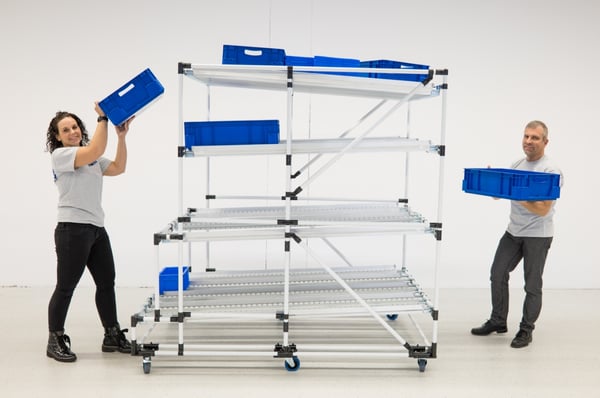
Flow racks are of great importance in various industries and warehouse environments for several important reasons:
Flow racks are especially useful for companies that handle large quantities of products and smooth material flow is critical. They help organize inventory, make the best use of space and reduce operating costs.
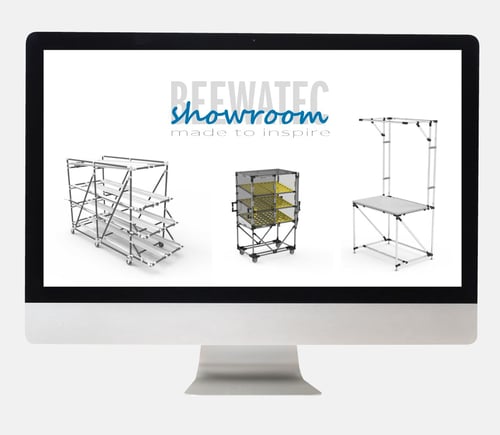
There are different types of flow rack that are used depending on the specific requirements. Here are some common types of flow rack and their typical applications:
These flow racks consist of roller tracks (= channels) and are particularly useful for picking small parts and products. They are well suited for products with a relatively high throughput, such as food, beverages, consumer goods or in production.
Tip: Brake rollers help to slow down the stored goods when the angle of inclination is very steep, or there are strong height differences between the storage side and the retrieval side.
Suitable load carriers: e.g. KLT boxes, containers, cardboard boxes (different roller track types are more suitable depending on the load carrier).
Get your gravity flow rack from BeeWaTec >
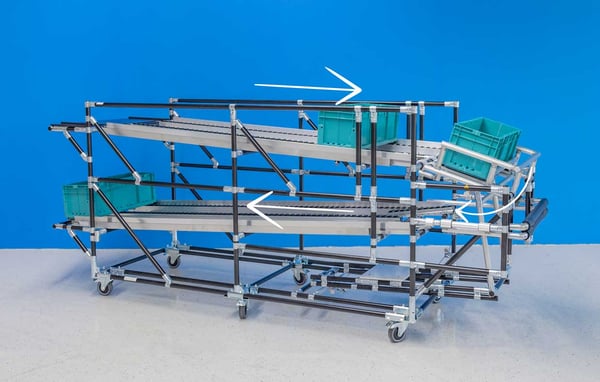
Also by means of inclined shelves, simple rack systems can be built, where e.g. cardboard boxes slide in the storage channel (without a roller track). This type is usually only used for short distances, but can already significantly optimize storage and picking performance.
Note: The shelves need much higher inclines due to the friction effect.
Suitable load carriers: e.g. KLT boxes, containers, cardboard boxes and individual parts.
Get your gravity flow rack with shelves from BeeWaTec >
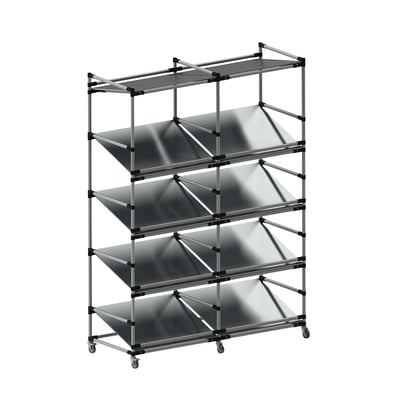
Pallet flow racks are specially designed for pallet storage and are suitable for large, heavy products. They are often used in warehouses and production facilities where pallet materials are moved.
Suitable load carriers: e.g. pallets, grid boxes.
In these racks, products are pushed forward with the help of a push beam. They are well suited for storage with limited space and high throughput, for example in the food industry.
Suitable load carriers: Here, the product itself is usually pushed forward (e.g. shrink-wrapped ham on supermarket shelves).
These racks have drive elements such as powered conveyors that automatically move products forward. They are versatile and can be found in various industries, including the automotive industry as well as logistics centers.
Suitable load carriers: e.g. pallets, mesh boxes, boxes, containers, etc. (mostly for products with higher weight / heavy loads, or for long transport distances).
Overall, there are a variety of different types of flow racks. Which one is selected depends on the following factors:
What also matters in the planning and implementation of a flow rack >
Flow racks are used in various industries and applications. Here are some examples of flow racks:
These examples illustrate that flow racks are used in a wide range of industries and applications to optimize storage, speed up material flow and increase efficiency.
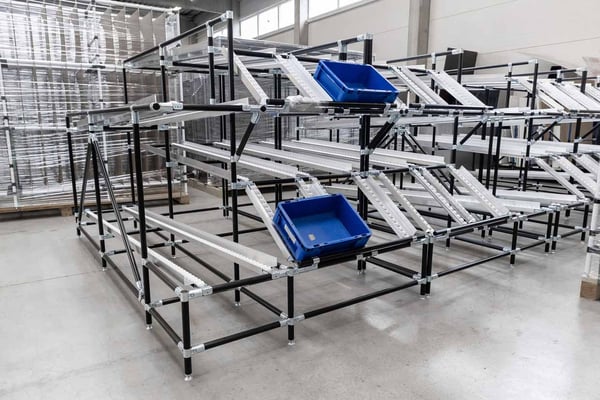
Planning and implementing a flow rack requires careful thought and steps to ensure it meets the needs of your business. Here are four steps to plan and successfully implement a flow rack:
Want to get started quickly on your own? Take advantage of our free 30-day version BEEVisio (3D software).
BeeWaTec is one of the leading suppliers of flexible operating equipment, including racking systems made of pipes and joints (e.g. steel or square pipes). Depending on the requirements and specifications, the storage systems are individually designed and built.
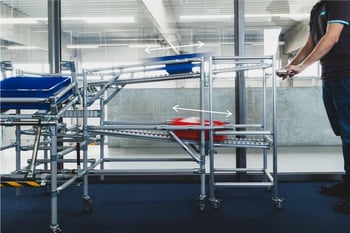
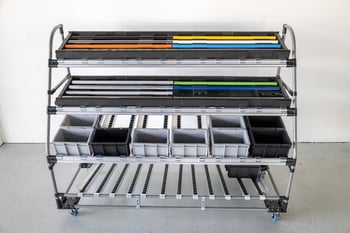
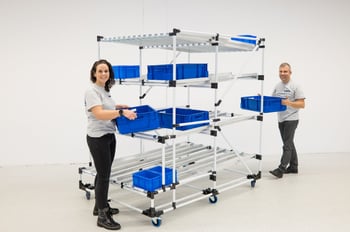
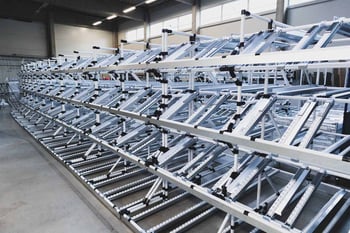
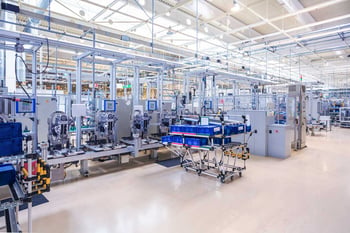
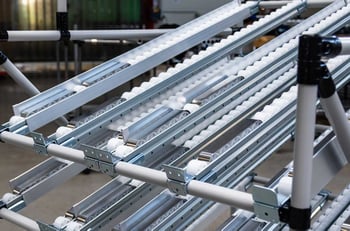
Flow racks made of pipe-racking systems also offer a variety of advantages:
Discover a variety of flow racks in our digital showroom and get inspired for your project.
Flow rack is an extremely efficient solution for storage and smooth material flow in a wide range of industries and applications. Its operating principle is based on gravity and the First-In-First-Out (FIFO) principle, which allows organized access to products and optimal space utilization. This helps to reduce storage costs, increase productivity and improve product availability.
Although flow racks offer many advantages, their design and implementation requires a thorough analysis of individual requirements and careful configuration. Selecting the right materials and components is critical, as is training order pickers and regular maintenance to ensure smooth operation.
Overall, flow racks are a valuable investment for companies focused on optimizing their warehouse and material flow to gain competitive advantage in an increasingly efficiency-oriented business world.

In a world where markets are changing rapidly and competition is more intense than ever, organizations are looking for effective methods to remain...
At a time when companies are striving to increase efficiency and cut costs, the concept of lean management has established itself as a highly...
The material flow is an important part of every production and logistics. It describes the physical movement of materials, products and goods through...